|
Published in the Star Tribune & Outdoor News 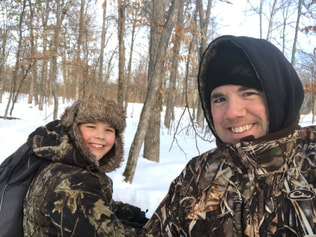 The good news is that winter will be around for quite some time. The bad news is the same. Welcome to winter purgatory. One of the best times of the year to get outdoors because most people are content to sit it out. Fishing licenses expired February 28 and most people don’t renew them until the eve of the fishing opener. Darkhouses, fish houses and portable fish houses must be off the ice soon as well: March 4 on waters south of Highway 2 and March 18 on waters north of that line. Turkey season doesn’t start up until mid-April around the same time as the regular stream trout opener. Most hunters and anglers only tend to venture out to visit shindigs like the Deer & Turkey Classic March 8, 9, 10 and the Northwest Sportshow March 21 to the 24. Otherwise, the couch or easy chair is the place to be while the television set is tuned to one of the many hunting or fishing shows. All of that is why this is a great time to get out there. The crowds have dispersed and some of the best opportunities to be had prevail. It’s bucket list time. We are living in unpredictable times and the months of March and April are the most unpredictable of all. Minnesota’s jumbo perch lakes are about to enter what, in my opinion, is the greatest fishing opportunity of the year. Bluegill and crappie lakes are also great this time of the year through the ice. Catch a bunch, release almost all of them, and take home a fresh meal. Stream trout anglers who have never tried the southeastern catch and release season might want to consider giving it a try. Watch the ice ledges along the sides of the creeks but soak in the silence of a slowly slinking stream before the spring melt floods them. Predator hunting in the deep snow is prime time right now, just be ready to do a lot of scouting and cover a lot of ground. My son and I did some coyote hunting last weekend and while we were unsuccessful, it was a joy to sit in the snowy woods. Someday sooner than later the snow will begin melting and snow geese will fill the skies. Waterfowlers who haven’t tried this hunt might want to follow the scouting reports as they move north. The action is hot and heavy once it strikes. Fill the gas tank and drive north until the Canadian border shows up on the GPS, then keep on driving. Border waters are open to ice fishing for a long time to come and offer terrific angling opportunities. Whether you want to chase giant pike on the ice near where rivers flow into lakes, or want to venture onto a quiet lake trout lake, trophy ice fishing in March (and even April) is an exhiliarating experience. Just remember that ice is beginning to weaken and two feet of ice isn’t as strong as it used to be! There’s more. Shed hunting, turkey scouting, foraging, and birding are all good excuses to cancel the cable subscription and let the couch remain unfilled. Bring the kids, bring the dog, and bring your husband along for the experience. Surprises abound when you step out of your comfort zone. 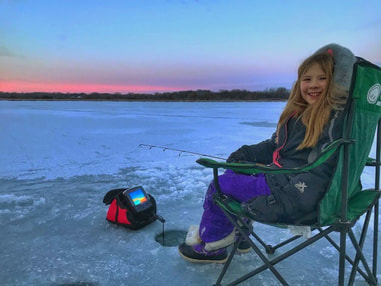 Kids love ice fishing when its introduced to them properly in a way that raises the fun and reduces the misery. If you wish to have a future ice fishing partner, the challenge is yours to make it something they want to do again.There are some basic things to keep in mind when taking any number of kids out onto the ice. It’s not just good advice for kids but for all rookies you might fish with this winter. As a rule of thumb, understand that taking kids on the ice means you are a full service fishing guide, entertainer and coach while at the same time being a fun partner with an open agenda. Kid facts Adults are nothing more than big kids who have learned to play the game of life a bit better (usually). Adults get bored, but not as quickly as kids. Adults want to catch lots of fish, but are more willing to wait than kids. Adults get cold, but not as quickly as kids. Seems obvious but most adults forget these facts. If the child wants to play, read, or do something else besides fishing, let them. They’ll be watching whether you know it or not. If you show that you are enjoying yourself, chances are they’ll want to try it again. Kids want to be independent and do as much as they can by themselves. There is a fine line to walk between doing it all for them, and letting them try it and fail. Be accommodating and helpful, but when they say ‘I want to try it’ or ‘I can do it myself,’ let them. Shelter is essential, especially when the temperatures are closer to single-digits or colder. Renting a fish house for the day is a great option, but sometimes a bit expensive. A high quality portable shelter will keep you warm, provide plenty of storage for gear, and is durable enough to hold up to the wear and tear that only kids seem capable of dishing out. If you can fish on a lake where roads are plowed and someone can direct you so driveable ice, a vehicle can serve as a shelter—just make sure to follow all the precautions. Ice is never totally safe to drive on and conditions change rapidly. A numbers game Unless they are already seasoned anglers, most kids would rather catch five one-pound fish than a single five-pound fish. Kids crave the action of fishing and numbers will have them asking to go again. Separate your fishing experience from theirs. If you are taking a child out fishing, you are the guide and they are the client. If they get sick of catching little perch and tell you they want to catch walleye, then go for it. On the other hand, if they want to play on the ice for awhile, this can give you a chance to pop a few more holes and find active fish. Keep fishing hard if you must and when you find the action get the kids on it. Just don’t lost sight of the overall goal, spending time together, so maybe it’s a better idea to put down the fishing rod and play too. Everything you do in the outdoors has potential for misery–it’s how you respond to it that makes the difference. A child is probably going to get cold at some point in time and want to go home, but if they had lots of fun as well, they are going to want to go again. Stay warm and dry Keeping warm is harder for kids than it is for adults. Keep them comfortable and they will usually stay on the ice longer. If you have a depth finder or underwater camera, bring it with you. It can help your fishing success and give the child something else to look at besides a hole in the ice. Short trips are always better than long trips. So start out close to home and plan on being out for a few hours. Have some snacks along and don’t forget the hot chocolate. Remember that kids sometimes need a lot of processing time and don’t always make up their minds very quickly. If you ask whether or not they had a great time, you might not get the answer you want or they might focus on a minor detail rather than the big picture. If they don’t give you the answer you want the first time, give them more time. Ask them a month later and they may have changed their mind. If not, give them until next season and ask again. It’s only a problem if you stop asking! 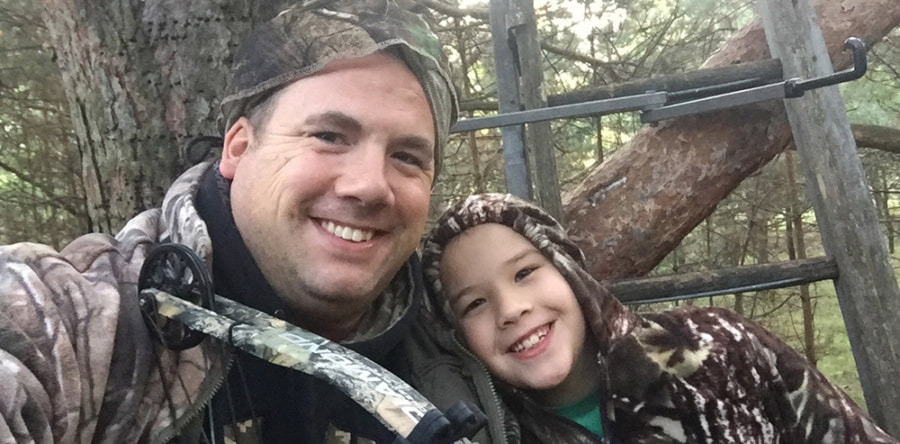 The very nature of white-tailed deer archery hunting involves a great deal of silence with the goal of luring in a creature with arguably the best hearing in the woods. A good friend and I were chatting about that just the other day, exchanging stories of miniscule noises escaping our bows and busting us during the long but quick-moving Minnesota whitetail archery season. I spend about half of my archery hunt in a blind and the other half in a treestand. Actually, I spend another half walking around, spot-and-stalk hunting, but my math skills are only slightly better than my stalking skills, so that’s hardly worth mentioning. While I reserve those hunting hours for when I believe there’s the best chance of being successful for myself, I like to bring one of my kids along for hunts, too. Two of my hunting locations are within walking distance of either my house or my parents' house and I take advantage of those opportunities to get my kids in the woods for some of the greatest life lessons around. This will probably be the last year I’ll do that without having one of them hunting alongside me because my 10-year-old son is getting his bow close to legal hunting draw weight. He’s convinced that he’ll make his first hunt later this season, but we’ll see. A few weeks ago I told him that I want to see his groupings get tighter, and since I’ve said that, he’s vastly improved. The kid is motivated. I’m convinced that his desire and drive is the result of bringing him into the woods with me frequently, even when I knew his presence probably doesn’t help my success. Sitting together in a double deer stand is challenging simply because it’s tough to mask noise and movement. It’s also tricky because it requires managing two harnesses in tight quarters. We spend almost all of our time together in a ground blind or stump-sitting. The age and ability of your child to sit still for any length of time is the greatest barometer of how long you can hunt with a little buddy. When we first started, at the request of the kids, I told them they have to sit for at least 20 minutes to return. This served as a good beginning benchmark, and now we usually measure our times in hours. Snacks help and I feel terrible admitting it, but a digital device with silent activities can help break up the monotony (for kids of all ages). Just remember that the point of being out there is to watch the woods and sit in silence. Avoid headphones and limit usage to just a few sporadic minutes. A love of hunting and the outdoors is something that’s cultivated over time and evolves from short sessions to longer outings. It’s a busy world, so finding time to hunt is tough enough without trying to mentor young people as well, but the investment is well worth it. Not only am I gaining future hunting partners, I’m also helping keep this rich tradition alive for all of us. Hunting requires hunters so we have to home-grow the sport if we want to keep it around. One hunter at a time. For more information on the youth recruitment efforts at Outdoor News, visit the Junior Pro Team website. 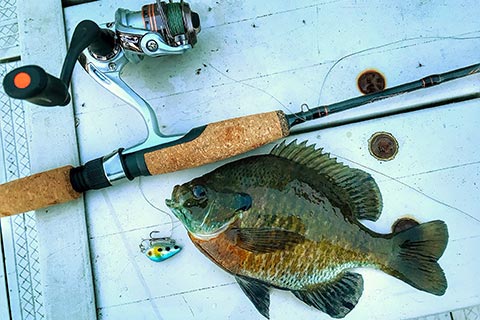 Though there are plenty of marginal YouTubers out there causing problems and producing hours of rotten content, many fishing channels on YouTube do a pretty respectable job. My kids have become fans of the “618 Fishing” channel hosted by Nick Calcara of Edwardsville, Ill. He has a great on-camera personality and genuinely loves to fish. He’ll celebrate a small rock bass just as much as a big ol’ largemouth, mainly because he likes different challenges. We first found him when my son was searching big baits on YouTube and came across the 618 Fishing “Big Bait Challenge.” Calcara ordered a few giant swimbaits and was trying them out in the local watering hole to see what he caught. He’s done other videos like the “ugly bait challenge” where he used lures resembling bugs (made by Rebel) and tried them out to see what he caught. With our cold winter this year, Illinois had enough ice on area ponds that he created a few ice fishing episodes. As I write this, his 618 Fishing YouTube channel has more than 153,000 subscribers and is closing in on 33.5 million views. To put it into perspective, Lindner’s Angling Edge has 31,500 subscribers and 8.7 million views. Compare that to my OK YouTube channel WriteOutdoors, which has almost 300 subscribers and 367,000 views, and I’m small potatoes. To be fair, Nick churns out a regular episode almost every week and does a fine job with each one. My YouTube channel has virtual dust and cobwebs on it most of the time, because I don’t update it frequently. Needless to say, I’ve made several lure purchases during the past year for my kids solely based on some of these various challenges Nick has given himself and invited others to try. We now have several large swimbaits, a collection of bug lures, and a collection of micro lures that were only $6 for a 10-pack. It’s introduced us to something I’ve never done in my life: Fish super tiny crankbaits in a trout stream and off the dock. So far bluegill and small bass have bit with reckless abandon. We will give the baits some work on lakes and rivers this summer and see which one of the three of us catches the biggest fish on a microbait. We also picked up a few big swimbaits and will try those on some big water later on this summer. Adding some variety and challenge to our family fishing fun has brought us an extra element of entertainment. My son has also figured out a way to award points during each fishing day to see who gets the most. It takes into account species, size, and a few additional features. It’s easy to do this yourself and in a future blog I’ll explain the details of the point system we’ve created. Know a kid that enjoys the outdoors? Check out the Outdoor News Junior Pro Team and get them signed up today! https://jrproteam.com/join-the-junior-pro-team/ 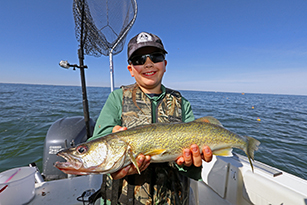 Growing up, I had a map of the Great Lakes in my room, and I’d stare at it wondering what it would be like to spend time on each one. I enjoyed stories of the fur trade and large canoes plying these massive waters pursuing international trade. But it wasn’t until my 10-year-old son asked my father-in-law that I’d get the chance to venture to all five lakes pursuing fish. As a teacher I try to get my students out of the classroom as much as possible because I believe travel and experiences are the best ways to learn. Even in the classroom, I work to transform the space and bring in as much of the world as possible. Fishing each Great Lake with my two children, nephew, father-in-law, and brother-in-law was loads of fun and a tremendous learning experience. Here are a few things I’ve learned and even more points that I’m still pondering:
Every year at Game Fair a wide variety of companies come to sell their products to an outdoors market. Some of the same large companies are there every year, but my favorites are the folks who bring the latest invention they created in their garage. Some of these inventions get picked up by consumers and make it big. The majority of the inventions don’t quite make it on the scene for one reason or another.
I was approached by one of these inventors a few years back and asked to make a commercial for them about their product. I was hesitant because I wasn’t sure if the world was ready for blaze orange toilet paper and if my commercial would help him turn a profit. Brian Primus was that inventor and he seemed really fired up about his product, he had a cool logo and sales booth, and was working the crowds really well. We talked several times about it over the six days of Game Fair and, after sketching out what the advertisement would look like, made a gentleman’s agreement to make the ad. I figured that Primus wouldn’t call, but several days later he called, we agreed on a price, and set a target date for completion. I wrote the script for the commercial, figured out what props I would need, and worked on finding some actors to star in the commercial. I planned on filming it during the early goose season with my hunting crew, but Mother Nature changed those plans with a end of hunt storm during the scheduled production time. I found myself up in Bemidji with my cousin and his now ex-wife, and told them I have to finish this commercial in a few days. They offered to be the actors and because we needed three people, I became the third. We wandered out into the woods in early September with the deer mount in my office, a roll of white toilet paper we drilled a hole into (to simulate it being shot), several roles of Rutt Wipe, and my camera gear. My cousin and his wife donned blaze orange while I put on not-so-safe hunting clothes including a checkered red and black hat to match the Rutt Wipe logo. We filmed it taking turns holding the camera and using a tripod. Filming took about 30 minutes and then I went to work on the production. I did a few post-production shots and had my cousin and his wife record some voiceovers. I found a fake gunshot sound and made my own fake fart sound (I vocalized the fart with my mouth, not my butt), stitched it all together and realized it was missing something—we didn’t have an actual deer wearing Rutt Wipe. No animals were harmed in the filming of the commercial because Primus and I got together to film the final shot using a deer decoy he purchased. We actually met at the Game Fair grounds and shot the scene where the deer is coyly looking at the camera with Rutt Wipe on his tail. Primus stood behind a tree holding my deer mount in his hand with the decoy behind him. It gave the look of a real deer walking behind a tree and a piece of fishing line affixed to the tail, being tugged by me as I filmed the shot, made the decoy come to life. All in all, it’s a campy production that was a lot of fun to create. We put it on YouTube and I figured that was the end of it. And then my middle school students found it and so did their parents—and the reception was fantastic. It never topped more than a few thousand views, however, in the first year of its release. The good news is that Primus was super happy with the commercial and the response. A few months later, he calls me to say that our commercial is going to air on national television. Apparently, the television show “World’s Dumbest” on the Tru-TV network spotlighted Rutt Wipe with a makeover of the original. Comedian Jared Logan took the commercial and made fun of some of the dumber elements within. He also made a startling confession about the effect using blaze orange toilet paper had on him. You can see that segment below! And then most recently, in a totally unexpected twist, a Facebook page by the name of Wide Open Spaces, edited the commercial and posted it online. I first heard about it from Ryan Bronson of Federal Cartridge and then I started hearing about it from everybody. Over the next 24 hours the video view count was increasing by the hundred thousand every time I checked it. It’s also resurfaced at school and I’ve had tons of middle schoolers asking for confirmation that they saw a commercial with their teacher pretending to poop in the woods. Upon confirming that speculation, the cool points soar through the roof, “I’m going to show my family this commercial.” It’s a high price to pay for fame, but somebody has to do it. If the video below doesn't load then just click here! Speaking to the crowd at the Earl Brown Center in Brooklyn Center, Outdoor News contributor Ron Hustvedt challenged attendees to think outside their societal norms and invite new users to the hunting and fishing sports. Scroll down to read his speech or find it on OutdoorNews.com The author presented the following as his keynote address on Friday night, August 26, at the Minnesota DNR’s Angler and Hunter Recruitment and Retention Summit in Brooklyn Center. Outdoor News presents the speech here in its entirety. For more details about the event, see the Sept. 2 print edition of Outdoor News.
Thank you everybody for being here tonight and tomorrow for the Angler and Hunter Recruitment and Retention Summit. There are so many amazing people here who will present to you and host breakout sessions. I am honored. I am also really excited, and nervous, to speak with all of you who are even more passionate and dedicated about this than I am. While I’m still somewhat surprised that I was asked to speak to you here tonight – I definitely feel out of my league – I think that my variety of experiences over the years put me at a unique place to speak with you and get this great gathering started. There’s important work to be done, and at the forefront of my mind is my 8-year-old son and a 7-year-old daughter (well, 7 a week from today). My wife and I introduced them to the outdoors before they could walk on their own and I hope they’ll take us outdoors when we’re too old to walk on our own. Thanks to the work all of you have done already, it’s been easy to get them out there and I feel good about the upcoming years. In fact, I dialed up my calendar last night for 2019 and 2020 and put a reminder in there to register both kids up for their Firearms Safety Course once they turn 11. What worries me though, is the long-range forecast for my kids and grandkids. I also worry about all the kids and adults who don’t get into the outdoors enough to know what it takes to keep these opportunities around and preserve our wild spaces. In addition to being a father, I’m also an outdoor writer. I’ve written for many publications over the years but most of all, and happiest of all, for the Outdoor News. It’s a newspaper that I consider to be the best source of reliable news and information regarding the outdoors in the state. I’ve had the opportunity to tell numerous stories over the years highlighting people, programs and organizations that focus on recruitment and retention. I got to know Ryan Bronson quite well when he was first appointed to that charge way back when, and even took Secretary of State Mary Kiffmeyer out for the first Governor’s Deer Hunting Opener. I have interviewed people near the end of their life who have brought the outdoors to thousands and I have interviewed young people who are just discovering what the outdoors can bring to your life. The Outdoor News has done a great job sharing those stories, and provided other outlets for young people to share their experiences. There’s never a shortage of grip and grin photos of young people in the pages each week and I’m excited when I see other writers like Joe Albert, Rob Drieslein, Tony Peterson, and the late great Gary Clancy write about bringing their kids and other kids outdoors. Our successes, trials and tribulations with kids hopefully inspire others to try it themselves. If one person read my article about taking my four and five year old out into a hay bale goose blind, and decided that it wasn’t such a crazy idea after all, then I’m happy. I have worked with Ron Schara to create the kid’s fishing clinics he used to host, putting my teaching skills to work at making a rigorous and enriching experience. I’ve taught fishing and hunting classes for community education in several districts. I also am a social studies teacher who brings the outdoors into his classroom as much as possible, and brings his students into the outdoors when possible. I’ve taken classes up to Mille Lacs for fishing launches, I’ve taken students and parents out together for their first hunting experiences, and every year during an exploratory learning day I teach lure making, casting and fishing skills. That trip to Mille Lacs, by the way, yielded zero fish, but all the kids who went said they had a great time. I know they did, because they were super disappointed when our school schedule wouldn’t allow it the next year. I’ve never been successful in helping a student and their parent bag a deer or turkey when I’ve been with them, but I gave them enough experience that they’ve stuck with it and been successful since. I’d guess that makes me a successful failure at guiding, but I’m sure proof that it’s not just about making a kill. I also like dragging the kids outdoors to teach them history in the setting where it was made, outdoors, not necessarily field trips. I’d go crazy otherwise, teaching in a classroom without any windows. I connect what we are learning about in the outdoors, and just to spice things up, I’ll show clips of various things I’ve done or photos I’ve taken. It always leads to great conversations, especially with those kids who were otherwise struggling in class but love the outdoors. It’s not long after that their struggles in class seem less as well. Relationships are what the outdoors build and fostering them is essential. Something else about me that is fairly unique is that I’m a city kid. I grew up in south Minneapolis, just off Lake Street, and have been enamored with the outdoors as long as I can remember. Bike rides through the woods along the Mississippi River Boulevard down to Minnehaha Falls, collecting bugs in the vacant lot on Hiawatha Avenue and Lake Street, long bike rides to Lake Nokomis to cast a line. I found the outdoors on my own and with my friends as much as possible and encourage that with my kids and my students. There’s not a house or apartment in Minneapolis that’s further than six blocks from a park. Encourage kids to explore and find such places. I was lucky to grow up with a father and mother who loved the outdoors. Nine months before I was born, my parents purchased a 16-foot green Crestliner that I still own and use as my duck hunting boat. I’m not sure if there’s a correlation between that boat purchase and my arrival nine months later, (and I’m not sure I want to give it much more thought than that) but apparently they were really happy to have a boat. That meant I grew up getting to fish several times a year, usually on Lake Waconia. My grandfather had a fish house, also on Lake Waconia, and I remember ice-fishing trips out there. My grandma would rent a cabin once every summer and we’d do a fair amount of fishing. In the fall, my Dad would go deer hunting. I remember that feeling when I was old enough to accompany him into the woods for the second weekend of the season. It was a definite right of passage. There was no recruitment or retention program back then, and even if there had been, I clearly didn’t need one even though I was a city kid. But even given that upbringing, I almost didn’t grow up to become the passionate hunter and angler that I am today. I’ll explain that in more detail later, but first, the main reason why I’m here. As I mentioned, I am a father of two wonderful children who are head over heels in love with the outdoors. Two weeks ago my kids woke up with me at 4 a.m. to fish on Lake Superior using “bobsticks” in 240 feet of water. We had a tough bite that day, but they are excited to go again. They’ve both been to the Boundary Waters while still in diapers and have each had their legs baptized while ice fishing. Both sets of their grandparents are retired and moved to “the cabin” so regular visits to them means plenty of time on the water, in the marsh, and in the woods. We’ll all wake up again at 4 a.m. in another week or so to lay in a field for an early season goose hunt, something they first did three years ago. This fall they will make numerous appearances in the woods wearing camo and/or blaze orange, and when the lakes freeze over they’ll be chomping at the bit to go ice fishing. Needless to say, my kids have had a ton of experiences, more than I ever did by twice their age, and I am proud that they consider the outdoors to be an integral part of their life. They are the number one reason why I’m here and why I hope you walk out of here with great ideas of how to grow a love of the outdoors in all Minnesota kids of all ages. But something that I still lie awake at night wondering about is this—will my kids continue to love the outdoors? Will they become advocates of conservation and sound resource management? Will they always be ethical and safe and practice the philosophy of leave no trace? Will their friends? Will their peers? Despite the best attempts of my wife and myself, there’s no guarantee. Despite your best attempts, there’s no guarantee. Societal pressures, changing attitudes, habitat loss, and more are pushing harder against us than we can bear. Remember that when you get in turf battles with each other over the scope and breadth of your different programs. Is it okay if you overlap with this group or that? Definitely, and why don’t you turn that overlap into a cross-promoting partnership? We are stronger when we are working together, and we all have such similar goals that it’s ridiculous to not be completely complementary with each other when it’s deserved. Likewise, if you are not in this for the right reasons and the long haul, either get out now or rededicate yourself to an ideal greater than you can imagine. Only when you push past your bounds, and focus on what’s truly meaningful, can you fully grow. It’s been an honor for me, over the years, to tell the stories of people who push past their bounds. I’ve written about MinnAqua, the FIN (Fishing In the Neighborhood) program and other DNR programs. I’ve visited Forkhorn camps, written about waterfowl camps, attended tons of special events, and profiled dozens of people who dedicate a portion of their life to bringing people into the outdoors. There are many people out there doing this work, and none of them are Superman. By that, I mean, the small acts of many definitely outpace the large acts of a few. The news in recruitment and retention is mixed and the trends are scary. I just hope that we aren’t waiting for somebody to come along and lead the way, because this kind of movement is one that needs to be led by the masses. Everything that each of you is doing makes a difference, but you are here to figure out how to coordinate together better, to develop new ideas, foster new relationships, and keep hunting and angling as an essential part of the lifestyle of Minnesotans. As you do that, I strongly encourage you to look at the largest groups of new Minnesotans, most of whom are people of color. Please continue to, and expand what you are doing, to specifically meet with them to find out what they know and would like to know about hunting, fishing and the outdoors in Minnesota. If it’s part of our state’s heritage, then it should be part of our process of folding everybody together into a symbiotic relationship. Some groups of people already have it as part of their heritage, while others do not. It wasn’t that long ago that another wave of immigrants, much larger than anything we see today, brought new folks to this place. Some of them had a hunting heritage from Europe, others did not, but for many at that time, it was essential to their survival. Tragically, the lifestyle of those already here was trampled on and almost destroyed. Minnesota’s original inhabitants are owed the best efforts to help rebuild those traditions. The name Minnesota is a Dakota word that goes back probably thousands of years. Fishing and hunting here goes back just as far, if not further, but it’s continued to be embraced by the newcomers. That includes my immigrant ancestors and it applies to the most recent immigrants. We must continually be reaching out to specific groups of people, especially those underrepresented, like women, people of color, people in the urban core, and those in rural areas where local infrastructure is diminished. A book I read this summer, called “A Good Time for the Truth” offered up some tremendous insights and I encourage all of you to read it if you are truly serious about bringing all Minnesotans into hunting and fishing. It was edited by Sun Yung Shin, who also wrote the introduction, and I’d say it’s definitely required reading for all of you before you can seriously commit to reaching out. I’d like to read a few passages from her introduction, but these excerpts hardly do the entire piece justice. She says, “It’s hard to talk about race across racial lines. Race is ingrained in societal systems and institutions, conferring a system of advantages upon members of the dominant group. This means that people’s realities, their lived experiences, differ. Race is often invisible to those who benefit, willingly or unwillingly, knowingly or unknowingly. It is entirely visible to those who do not benefit.” She continues a bit later with, “Most people of color in the United States have to think about race every day, multiple times a day. We are constantly negotiating our bodies and our selves, our identities, in a racialized society. How we look, and who our people are or are assumed to be, are relentlessly measured against a white ideal and mostly found inferior. We are nearly invisible–or painted negatively as criminals, victims, charity cases without history or agency–in the news, arts, literature, curricula, political platforms. We are the butts of jokes. We are racially profiled. We fear a backlash when anyone who looks like us or could be mistaken for us commits an infraction or crime.” You can deny that and turn a blind eye to it, or you can realize that it’s a genuine experience and an opportunity to extend an invitation. And finally, I thought this passage was especially connected to this conference, “As residents of a state and territory that is wealthy in resources (Indigenous knowledge shared with early European traders; abundant waterways, forests, minerals, soil; hardworking immigrants in every generation) and has been an economic and quality-of-life success story in so many ways, Minnesotans cannot continue to bury the lede in the national conversation about us.” I give Sun Yung Shin so much of my speech time because she’s an amazing author, and because she addresses something that I feel is easily overlooked. What all of you are doing is not the “Field of Dreams” for everybody. You can build it, but that doesn’t mean people will come Ray. There is a significant portion of our state population that needs an extra invitation, or two, or three, or more, because of events none of us had anything to do with. I’d argue that much of this is true for women as well. The ones who I have spent significant time afield will tell you that they are regularly mocked or degraded for being outdoors. Those who endure it do so because they have a passion for the outdoors, which is what we want, but how many never venture forth to avoid those unnecessary pressures? We will never grow this outdoor lifestyle as much as we’d like, as much as is critical for its survival, unless we lay out the red carpet every day to all people and continue to send special invitations to those who we aren’t seeing out there. I would hope that the next person you hear this from won’t be a white guy like me, but a group of people, with their own individual experiences, who can provide some examples of how you can do this. I don’t personally know, because that’s not my journey. So seek out a multitude of voices, from those in the know. I’m a teacher, and I’m proud to say that I work hard and do a pretty good job. Somehow I’ve even managed to receive a few awards over the years, including this last week being named the Middle School Social Studies National Teacher of the Year. I keep the awards I’ve received in a trophy case at the school, because I’d never have received them without my students and colleagues. My real trophies are probably the same as yours, those letters and notes from students and parents. I keep them in a folder in my classroom during the year, and move them into a box in my house every spring. They are my personal trophy case. But everything that makes me a good educator, stems from the relationships I build with my students. The same way that you build relationships with the amazing programs all of you run. On a side note, while one day events are great, they are too flash in the pan to develop significant relationships and don’t immerse people enough to have the lasting impact we’d like to have. If you do have a one-day style event, I’m not saying you need to double your work and have it for more days, I’m suggesting that you use it as a meeting-place for people to get to know one another and then encourage and empower them to continue those relationships. Speaking of the education world, let’s make outdoor skills part of the state physical education standards in a way that spirals them from the younger grades on up to high school. What Minnaqua has done to connect their program with elementary, middle and high school standards and benchmarks with science, math, social studies, English, is fantastic. It’s what teachers need to justify working with Minnaqua to school level and district level administrators. Are you able to provide training and planning opportunities for teachers and coordinate with local conservation clubs and outdoor organizations to foster partnerships? Likewise, work with middle schools and high schools through subjects like math, biology, geography, history, economics, government, to serve as speakers and use real world examples from the field. It also might make sense to change the firearms safety certificate program to an “Outdoor Safety Certificate” to make it easier to get more of those programs into the schools. The Archery in the Schools program has been a tremendous success and it’s an opportunity underutilized to present bowhunting as an effective, humane, and truly organic way to obtain meat for the table. The Minnesota State High School Clay Target League has experienced tremendous growth in recent years, but is it translating into more duck and pheasant stamp sales? Are there more grouse and turkey hunters roaming the woods? I know there are people in this room with tremendous ideas of how to fold all of that together who have the tenacity to make it work even if they meet resistance at first. We need to invite and support, rather than mandate, schools to promote the outdoors. It’s happening in small pockets, like my classroom, but it needs to be more supported and promoted, and by all the entities out there including local clubs and statewide organizations. You don’t have to do it all yourselves, but how can you start conversations between that local club and the middle school? How can volunteers at the local range work through the district’s community education program to get high school kids to learn gun safety? I know it’s not simple, but like the Little Red Book of Selling tells us, “The sale is yours for the asking; all you gotta do is ask for it in the right way.” That book is actually a really good teaching manual, because so much of what I do in class is sell my kids on working hard and enjoying learning. It really is a sales job. So much of what you do is selling people on what you need because they money isn’t otherwise there. Leave it to a teacher to assign books during a speech! Let us continue to tie recruitment and retention to the rapidly growing farm to table movement and pull in advocates of those programs, some of whom are already coordinating with the schools. The agriculture folks have several programs in the schools, and not just rural areas. Seek out partnerships with numerous entities that work with teachers. STEM is what everybody is talking about in education these days. I teach social studies at a STEM school and have had to fight to demonstrate just how STEM-related history is…and it definitely is, especially through the process of inquiry. Hunting and fishing are part of our history and I bring that to my students, but back to STEM—hunting and fishing are about as STEM-related as you can get. There’s plenty of science, lots of use of technology and engineering, and the math is everywhere. My point? All the talk and discussion that will happen here tonight and tomorrow are great, but you can’t walk out of here and do it all by yourself. As somebody who isn’t fortunate enough to live and breath recruitment and retention on a broad scale each day, I’m inviting you to continue to engage us and seek out those who you either weren’t sure about, assumed wouldn’t be interested, figured couldn’t possibly make it work logistically, never thought about in the first place, or who said no the last three times you asked. I’d love to help, and I’m already your number one fan. I’m doing my part big time with my two Minnesota kids and giving a smattering to a few dozen more in whatever pieces I can. Let’s put more kids and adults who are in the outdoors to work of recruiting others by continuing to give them opportunities to do so. Do you think we can build more mentoring opportunities by incentivizing it through special seasons or award programs? And does the DNR have to coordinate all of that or can we allow for local and statewide organizations to have more autonomy to do so with the support of local managers rather than a department wide initiative. I don’t know if that’s rulemaking or lawmaking but if it could work, let’s get on it. Mentoring, special hunts, even more bonus opportunities to those who actively recruit will engage those already involved because we don’t want to lose those who are already on board. I can help you with that too, just let me know how or connect me with somebody who does. As I mentioned earlier, I almost faded from the outdoor scene when I was in high school. At South High School, nobody ever came to speak with us about hunting and fishing, but we did have somebody from PETA come and they actually made, what sounded to my 15-year-old brain, some points to ponder. Hunting and trapping are things of the past, there are more “humane” ways to get meat, do we even need meat when there are other forms of protein available? I could punch a million arguments in that today, but a lifetime ago was a different story. One thing that saved me was the relationships I’d built in the outdoors, especially my father. No amount of teen angst and rebelliousness was enough to make me want to reject the bond we had in the outdoors. The other thing was a well-timed column by Ron Schara, then the outdoors editor at the Star Tribune. Fresh off an animal rights protest in downtown Minneapolis, Mr. Schara addressed the hypocrisy of their movement. He reminded me, and I quote, “You are a predator. You can choose not to kill directly. But you do kill indirectly.” Then he really hit me, “The animal rights people don’t seem to understand this, the oldest of laws. They shout animals rights on TV and worried people – who fear the loss of wildlife and wild places – willingly donate millions to their unnatural cause. They can rip a mink coat with razors, but they aren’t saving mink. If animal rightists really were concerned about mink, they would save the streams. If you want to save a muskrat’s hide, fill the marsh. If you want to protest the demise of wild places for wild things, that’s the right thing to do for animals.” That changed my viewpoint and made me realize that I’m part of this system that’s truly protecting our natural resources. At the end of the day, that’s what all of this is about and why all of you do what you do. Like I said, preserving the outdoors for my children is my selfish lifelong priority. I can’t do it alone and neither can you. So let the conversations continue. Listen to and inspire each other here tonight and tomorrow. Then go back and keep those conversations rolling. Share them with those in your community, and ask others to help you. Send out those invitations I mentioned, and have extras handy so you can send as many as it takes. And continue being the matchmaker for all those of us searching for others to help us support you in our own little ways so that together, we can all make a big enough difference to preserve Minnesota’s heritage of hunting and fishing.
|
visit my social media pages to see the latest & greatest adventuresFacebook
Ron Hustvedt @RonHustvedt @GameFairUSA @writeoutdoors @gamefairusa Ron HustvedtFind out the latest news and information on what Ron Hustvedt is up to and what projects WriteOutdoors is working on. Archives
August 2021
Categories
All
|
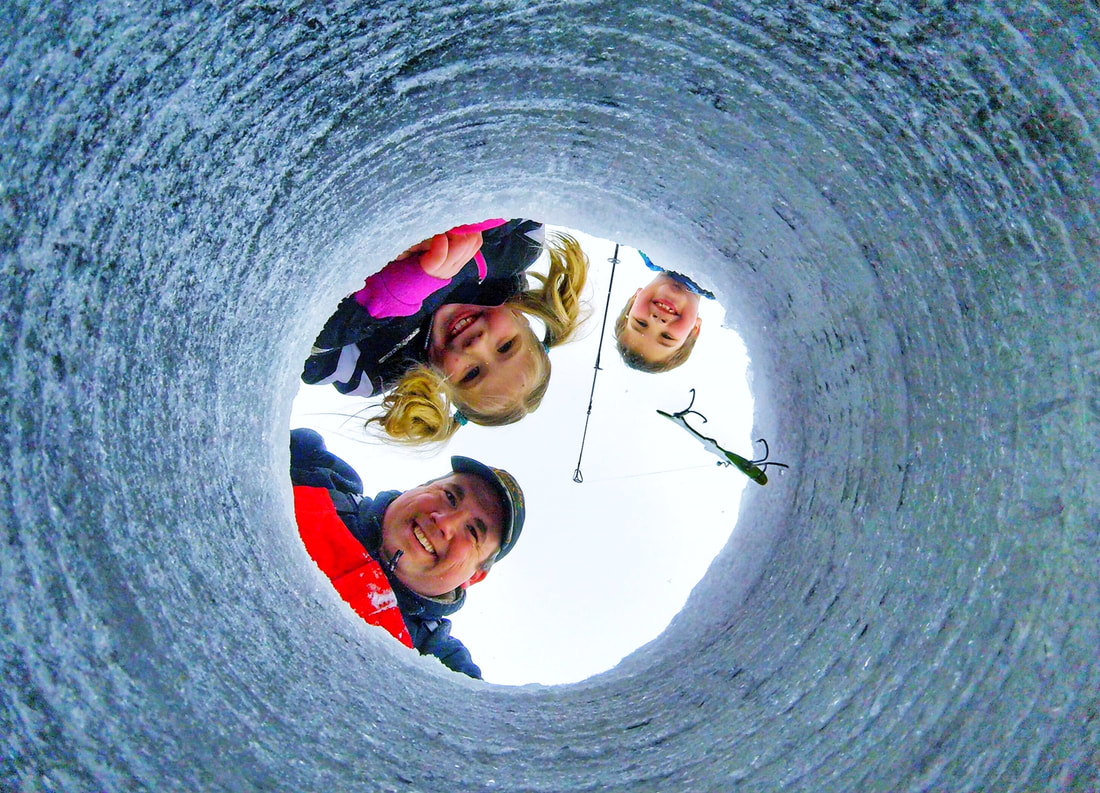
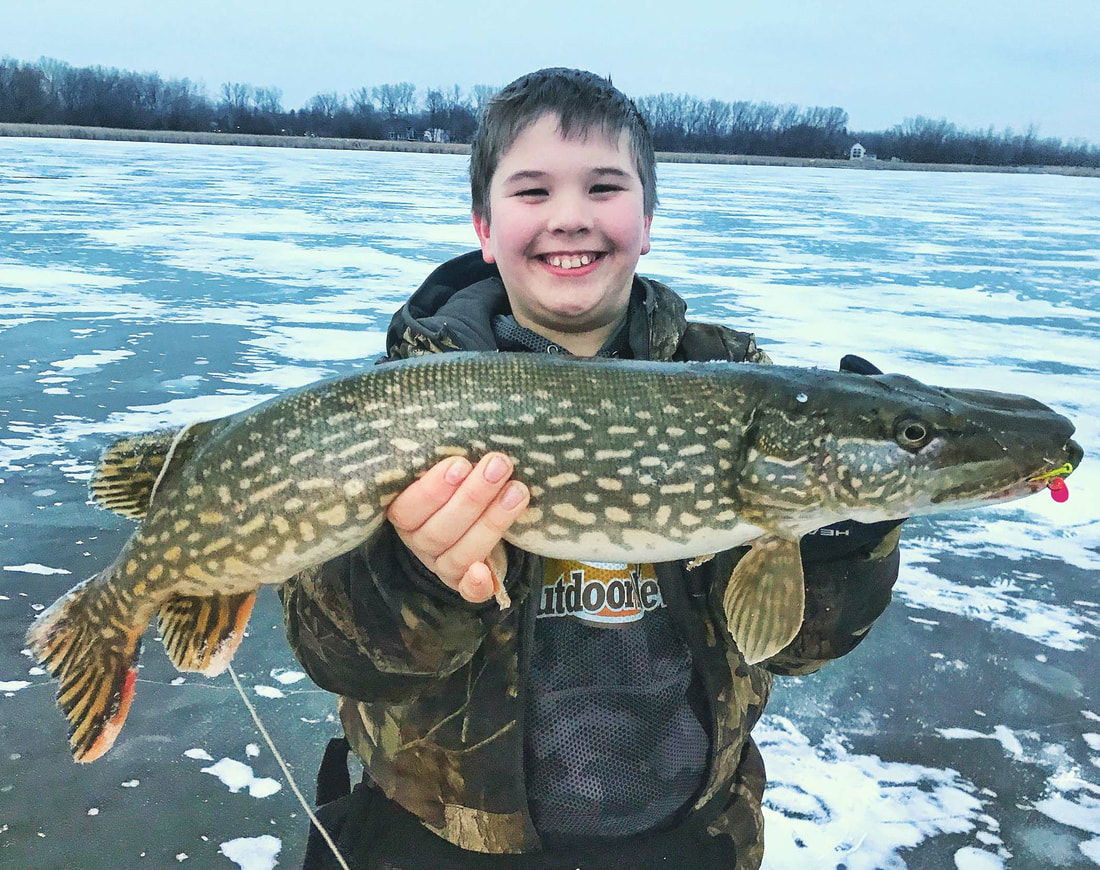
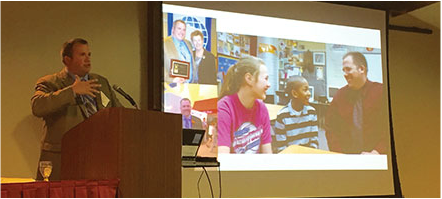
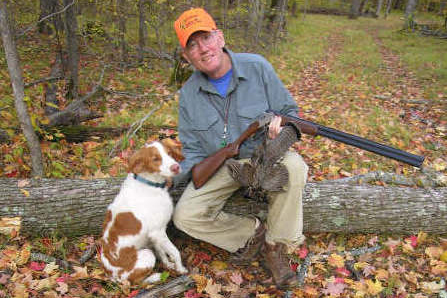
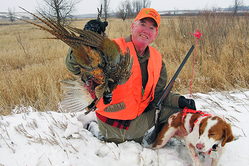

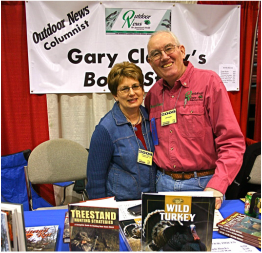

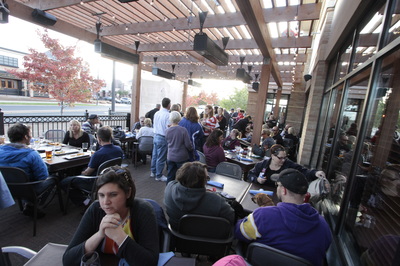
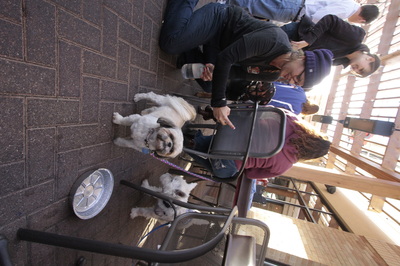
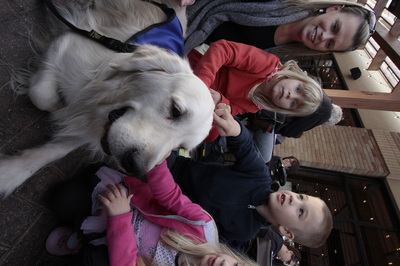

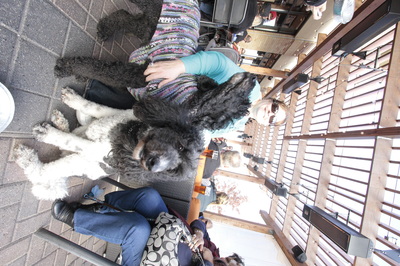

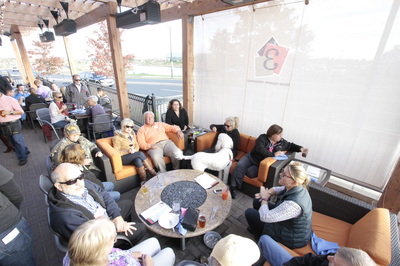


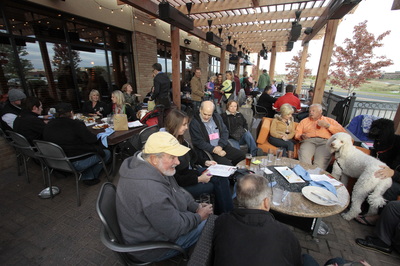
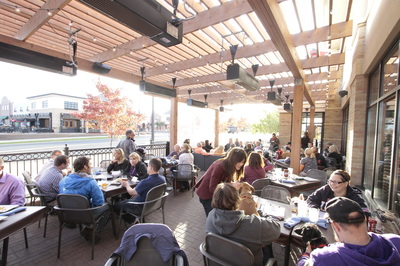
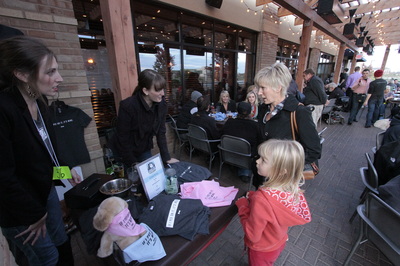
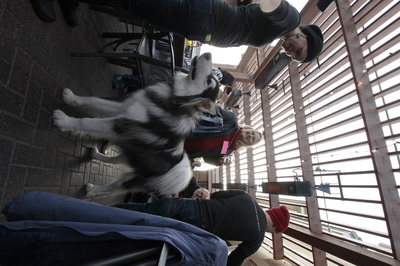
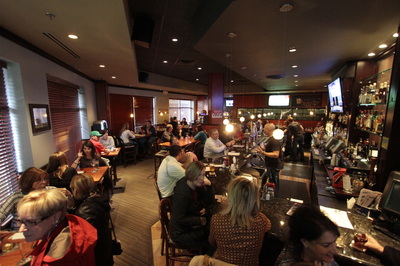
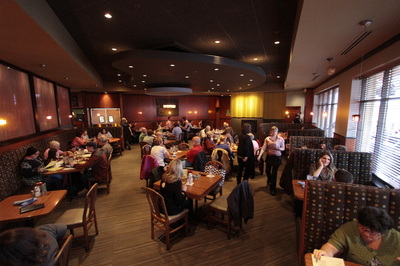

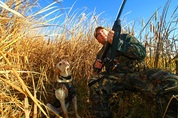
 RSS Feed
RSS Feed
